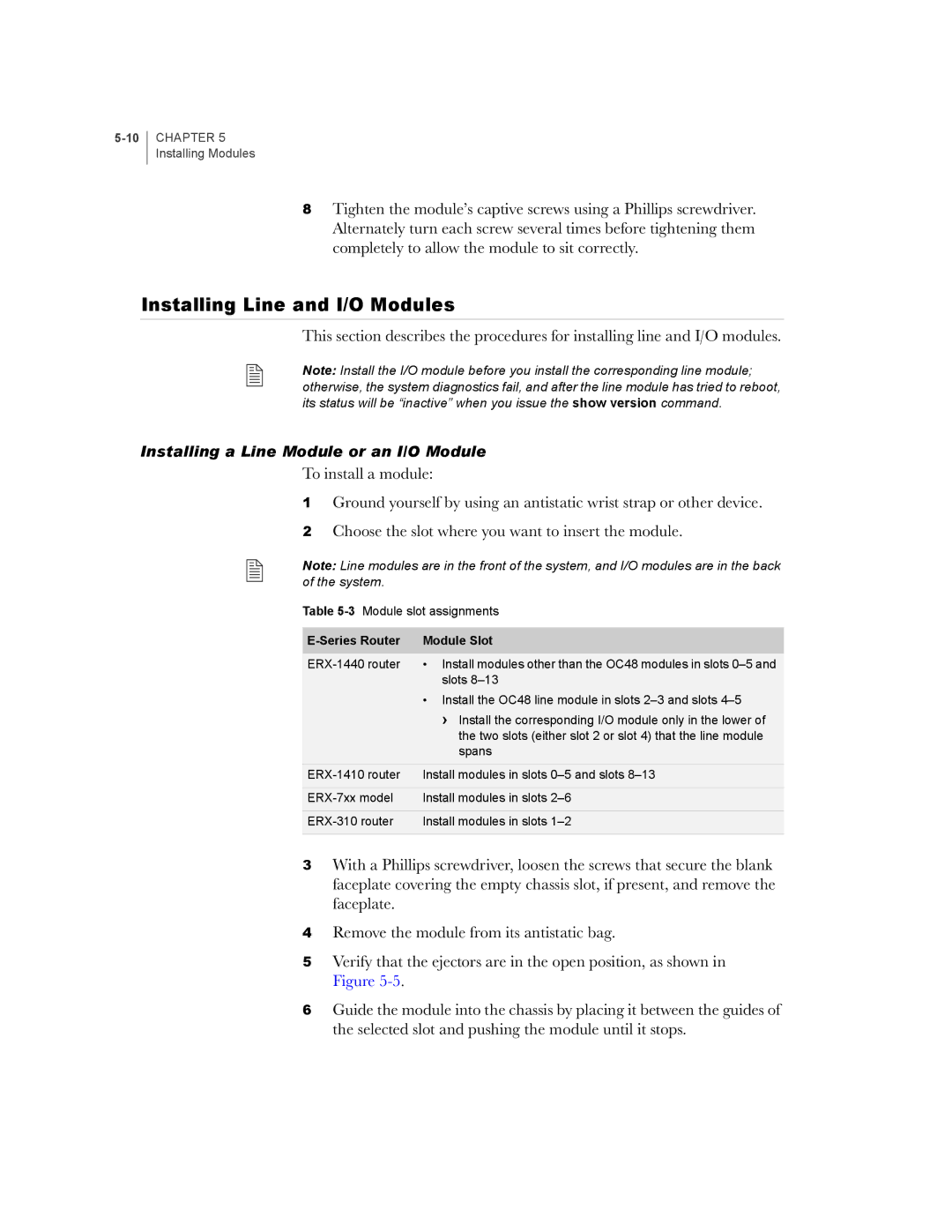
CHAPTER 5 Installing Modules
8Tighten the module’s captive screws using a Phillips screwdriver. Alternately turn each screw several times before tightening them completely to allow the module to sit correctly.
Installing Line and I/O Modules
This section describes the procedures for installing line and I/O modules.
Note: Install the I/O module before you install the corresponding line module; otherwise, the system diagnostics fail, and after the line module has tried to reboot, its status will be “inactive” when you issue the show version command.
Installing a Line Module or an I/O Module
To install a module:
1Ground yourself by using an antistatic wrist strap or other device.
2Choose the slot where you want to insert the module.
Note: Line modules are in the front of the system, and I/O modules are in the back of the system.
Table
| Module Slot |
• Install modules other than the OC48 modules in slots | |
| slots |
| • Install the OC48 line module in slots |
| › Install the corresponding I/O module only in the lower of |
| the two slots (either slot 2 or slot 4) that the line module |
| spans |
Install modules in slots | |
|
|
Install modules in slots | |
|
|
Install modules in slots | |
|
|
3With a Phillips screwdriver, loosen the screws that secure the blank faceplate covering the empty chassis slot, if present, and remove the faceplate.
4Remove the module from its antistatic bag.
5Verify that the ejectors are in the open position, as shown in Figure
6Guide the module into the chassis by placing it between the guides of the selected slot and pushing the module until it stops.
